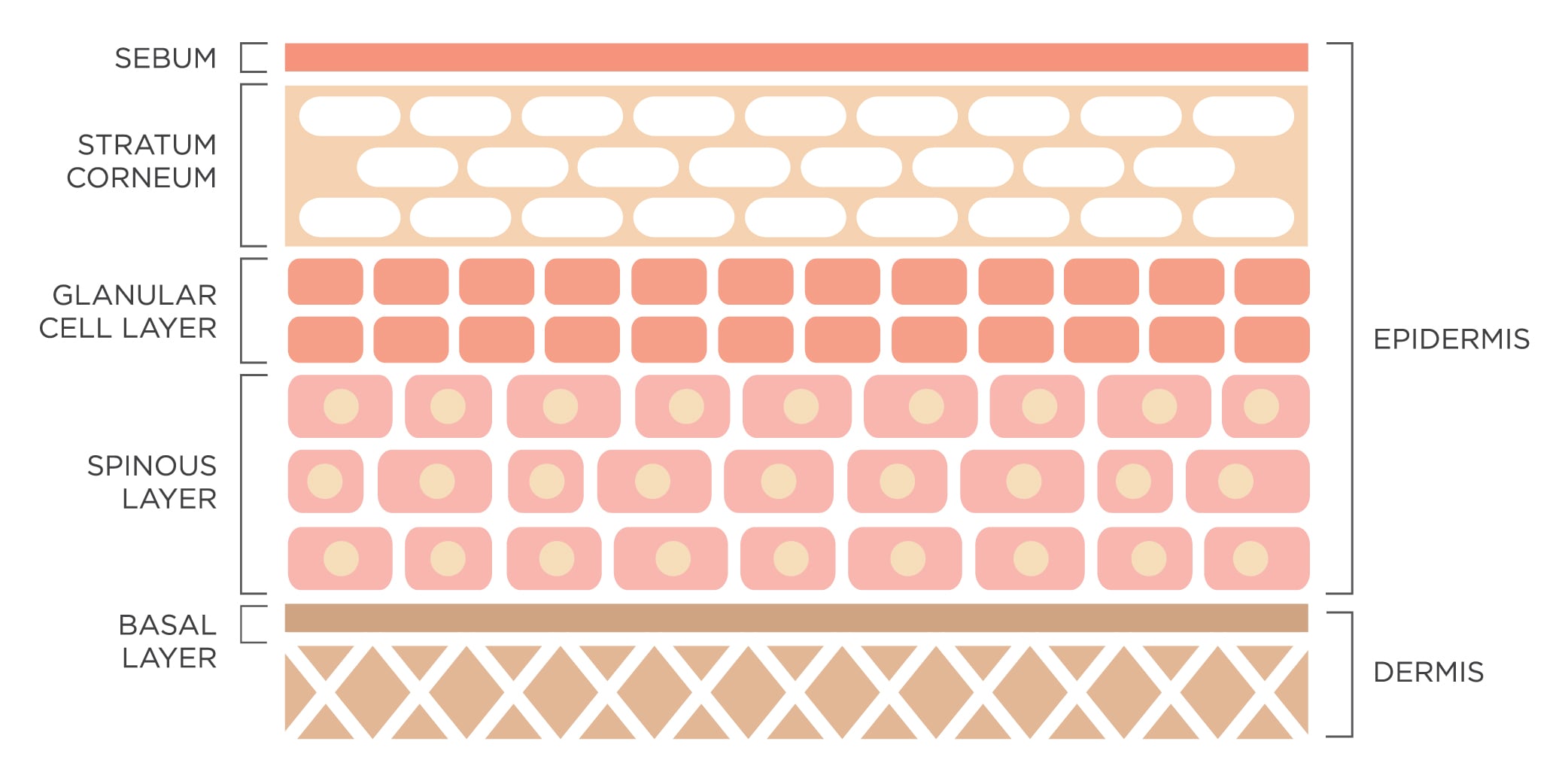As the largest organ of your dog’s body, the skin has its work cut out for it.
Working in conjunction with the coat, the skin provides a physical barrier to protect your dog’s internal organs from external threats. The skin also works with your dog’s immune system, helping to protect the body from allergens and infectious agents. It contains nerves that allow your dog to sense pressure, heat, cold and pain. Skin also helps regulate your pet’s body temperature and hydration.
The top layer of the skin, called the epidermis, is crucial to the role of skin as a barrier. Recent studies of humans and dogs with atopic dermatitis, a chronic allergic disease that leads to itching and secondary skin infections, reveal that defects in the epidermal barrier contribute to the disease, and protecting the barrier may be an important part of successful therapy.
A closer look at the epidermal barrier
The outermost layer of the epidermis is called the stratum corneum, and it’s the skin’s first line of defense, creating a physical barrier against external irritants.
Under a special microscope, the stratum corneum looks like a brick wall, with cells representing the bricks and a matrix made of lipids and proteins serving as the mortar. Ceramides are an important part of these lipids because they provide flexibility, enabling this layer to stretch and bend.

A break in the barrier
For years, scientists believed that atopic dermatitis was a result of a genetic defect that caused dogs to have an allergic reaction to environmental allergens such as pollen and dust mites.
Newer studies reveal that genetic defects in skin lipids and proteins, including deficiencies in ceramides,1,2 may contribute to microscopic breaks in the stratum corneum, even though the skin looks visibly normal. These defects may allow allergens to penetrate the skin and stimulate an immune response that leads to inflammation and itching.3
Why is this important? Because traditional therapy for skin lesions included a combination of treatments, but the main therapy focused on calming the dog’s immune system. Now, treatments to help maintain the epidermal barrier may help bring dogs relief, too.
New skin therapies
New skin therapies to help support the stratum corneum, and thus the epidermal barrier, include topical formulations that include lipids such as ceramides, which may stimulate the skin to produce more lipids to help heal the barrier. There may also be a benefit to providing dogs with essential fatty acid supplements, especially omega-6, which can be incorporated into ceramides, either as supplements or as part of a balanced diet.
While improving epidermal barrier function shows promise, more research is needed. Dogs with atopic dermatitis will still need a combination of therapies which may include regular bathing, flea control, diet trials, infection control and immune system modulation. If you have questions about your dog’s sensitive skin, your veterinarian is your best source for information on all the new therapies.
RELATED POST: Damaged Skin at Risk for Secondary Infections
References
- Shimada K, Yoon JS, Yoshihara T, et al. Increased transepidermal water loss and decreased ceramide content in lesional and non-lesional skin of dogs with atopic dermatitis.Vet Dermatol 2009;20:541–546.
- Reiter LV, Torres SM, Wertz PW. Characterization and quantification of ceramides in the nonlesional skin of canine patients with atopic dermatitis compared with controls.Vet Dermatol 2009;20:260–266.
- Marsella R, Samuelson D. Unraveling the skin barrier: a new paradigm for atopic dermatitis and house dust mites. Vet Dermatol2009;20:533–540.








